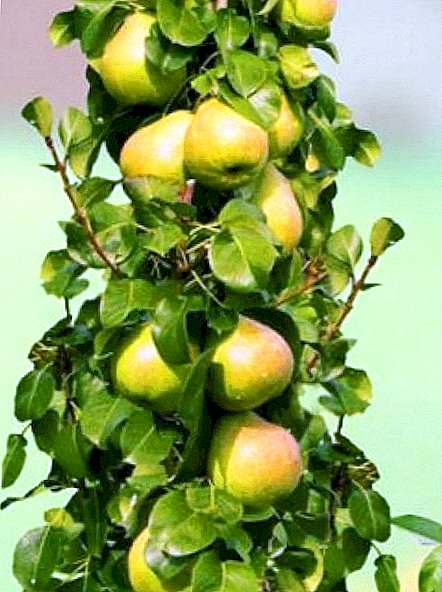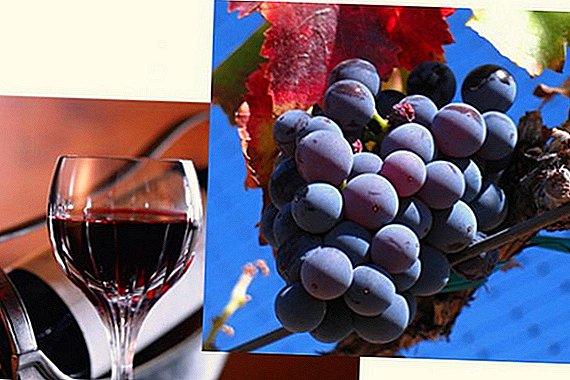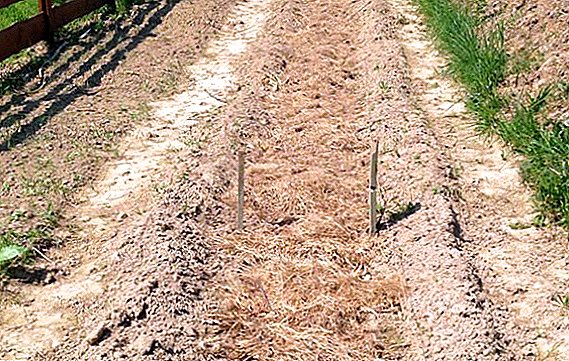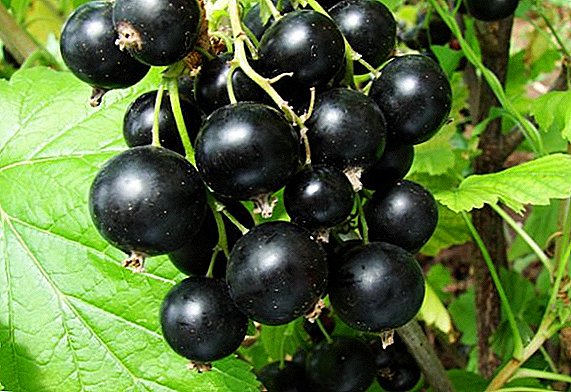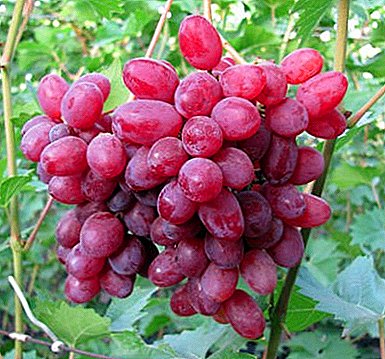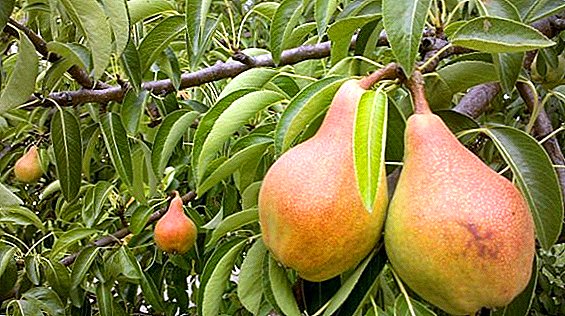 Growing rabbits is a common activity of the agricultural sector. Bred them in small farms and large rabbit farms. To productive performance reached maximum values, pets need to ensure the correct diet.
Growing rabbits is a common activity of the agricultural sector. Bred them in small farms and large rabbit farms. To productive performance reached maximum values, pets need to ensure the correct diet.
The diet of feeding rabbits at home
When it comes to eating habits, there are 2 main areas:
- differences in summer and winter diet of herbivores;
- the difference in nutrition of rabbits, adult rabbits, pregnant females and lactating rabbits.
Weight category of animals will also affect the amount of diet. Therefore, to understand the rules, it is better to focus on percentages, and not on grams. It is better to begin the characteristic of a diet with features of food of wild rabbits.
Read more about what can and should not be given to rabbits.
Due to the constant growth of the teeth, the animal necessarily needs branches, incl. for grinding teeth. The animal pays special attention to the bark of fruit trees. The basis of nutrition - grass, hay, found roots. The average weight of a wild individual is about 2 kg. Domestic eared meat meat can weigh about 7 kg, so their food should be of higher quality.
Changing the diet occurs by adding:
- feed;
- cereals;
- root crops that are not found in the wild;
- silo;
- special forage grasses (alfalfa, clover and others).
 The ratio of types of food in the diet:
The ratio of types of food in the diet:| Feed Type | Share in the diet,% |
| feed and concentrates | 36 |
| hay | 11,5 |
| roots | 9,5 |
| greenery | 43 |
In winter, the green mass is replaced by hay and succulent feeds, which include silage, feed pumpkins and roots, pulp, pulp. The power scheme is three times, regardless of the season. Also in the diet must be table salt and bone meal as a source of minerals (up to 12 g per day).
The main bulk of vitamins animals receive with food. If there is dry eye, runny nose, unwillingness to go for bonding, this can be a sign of a lack of vitamins. Vitamin C comes from green fodder, B vitamins come from wheat and bran, carrots are a source of vitamin A.
Important! Grass on hay can not be dried in direct sunlight, because the sun destroys vitamins in it, thereby reducing its beneficial qualities.An additional vitamin complex can be given to pets, mixing it into wet food.

In the summer
The basis of summer food - greens. To get the most nutritious grass, it is recommended to grow legumes, sow alfalfa, clover, lupine, corn, oats, winter crops. Legumes are especially useful in vitamins and proteins of plant origin.
We advise you to read about what supplements and vitamins should be given to rabbits.
Harvesting hay is better from grass before flowering, because it contains the maximum amount of nutrients and will be most beneficial. Rabbits themselves know about the benefits of grasses, so they reluctantly eat grass harvested in August-October.
Green rate:
- for adult rabbits at rest - 600-800 g;
- suckling females - up to 900 g;
- lactating females - up to 1500
There should be a lot of greens so that the rabbit can eat as much as his body needs. Shredded green mass (silage) is also necessary in the summer diet and it should be about 300 g for adult rabbits, with the exception of lactating rabbits, the rate for which grows by 30%. Also in the daily diet must contain the products listed in the table. 
| Feed Type | The norm in the diet, g |
| hay | 200 |
| branches | 100 |
| corn | 100 |
| roots | 450 |
| cabbage leaves | 300 |
| bran | 50 |
| cake | 10 |
| meat and bone meal | 5 |
| mineral supplements | 2 |
Important! Problems with growth are a clear sign of a lack of vitamins of group B. Disorders in the work of the musculoskeletal system are a sign of a lack of vitamin D. You can fill their deficit with bran, germinated grain, and industrial feed.For pregnant females, the amount of cereals, meat and bone meal and minerals is doubled. For nursing females (up to 18 days of age, rabbits) - double the entire diet.

In winter
The basis of the winter food - hay and roots. In winter, 1 rabbit needs about 300 g of hay and 100 g of branches, combined feed and concentrates - up to 300 g. Green mass in the winter diet is replaced by silage, which is harvested during the period of intensive grass ripening. Daily allowance - about 200-300 g per 1 animal, for a nursing rabbit - up to 600 g.
Winter daily ration of rabbits is given in the table.
| Feed Type | The norm in the diet, g |
| hay | 250-300 |
| branches | 80-110 |
| succulent feed | 200-300 |
| corn | 100 |
| roots | 250-300 |
| cabbage leaves | 300 |
| bran | 50 |
| cake | 10 |
| meat and bone meal | 5 |
| mineral supplements | 2 |
How much feed to give per day and how often the rabbit should be fed
In nature, rabbits eat out of schedule, and since they are herbivores, they have constant access to food. With cellular content, you need to provide the same constant access to greenery. Within 24 hours, the rabbit has time to make up to 30 approaches to food. You can enclose food in a cage 3 times a day (in the morning, at lunch and in the evening).
Learn how to rid the rabbits of digestive problems such as constipation, diarrhea and bloating.
Wet food types are given in such a way that food does not stagnate in the trough for more than 2 hours. Morning delivery of food consists of dry types of food, and root crops are preferably issued in the afternoon. At night, rabbits are given dry food, hay, twigs. Rabbits are twilight animals, so the dark time of day is not an obstacle to food.
At rest, adults feed in the usual way (minimum consumption rate):
| Feed Type | In winter | In summer |
| feed, concentrates, cereals | 160-200 | 100-150 |
| hay | 250-300 | 200 |
| branches | 100 | 100 |
| succulent feed | 300 | - |
| root vegetables, cabbage, other vegetables | 150-200 | 100-150 |
| greenery | - | 600 |
 Before mating, the feed volume is increased by 20%. The quality of food depends on the sexual activity of the male and female. In addition, well-fed animals produce better offspring. The diet of the sucker rabbit is increased by 50-60%, because during this period she needs a lot of nutrients.
Before mating, the feed volume is increased by 20%. The quality of food depends on the sexual activity of the male and female. In addition, well-fed animals produce better offspring. The diet of the sucker rabbit is increased by 50-60%, because during this period she needs a lot of nutrients.| Feed Type | In winter | In summer |
| feed, concentrates, cereals | 320 | 240 |
| hay | 480 | 320 |
| branches | 160 | 160 |
| succulent feed | 480 | - |
| root vegetables, cabbage | 320 | 240 |
| greenery | - | 960 |
Lactating bunny should get access to the hay in unlimited quantities. Vegetable diet must consist of 3 different types of vegetables. The total mass of feed compared to the standard amount is increased by 2 times.
Did you know? The largest recorded length of rabbit ears is 80 centimeters.Food of baby rabbits has a number of features:
- newborn baby rabbits and babies up to 1-1.5 months old are fed by a rabbit;
- new species are gradually added to the youngsters in the diet from the age of 20 days.
 For rabbit meat breeds, it is preferable to add granulated concentrate to the ration (30 g for a monthly rabbit and up to 90 g for a 2-month). Hay can be given from 2 months of age not more than 1 bundle per day. From the age of one month, the baby rabbit can be given finely chopped carrots and other root vegetables.
For rabbit meat breeds, it is preferable to add granulated concentrate to the ration (30 g for a monthly rabbit and up to 90 g for a 2-month). Hay can be given from 2 months of age not more than 1 bundle per day. From the age of one month, the baby rabbit can be given finely chopped carrots and other root vegetables.It will be useful for you to read about how to feed a nursing rabbit after a roundabout, and also to learn what and how to feed the rabbits without a rabbit.
Features of feeding rabbits with grain according to the Zolotukhin method
Zolotukhin's method consists in transferring pets completely to a grain ration.
The advantages of such nutrition consider:
- greater energy value of grain compared with grass and hay;
- high content of carbohydrates, minerals and vitamins.
At rest, the rabbits are fed whole dry oats, which are constantly in the feeder. Before mating and okolom - chopped barley. Rabbits steamed oats, males are added to the breeding mixture of corn. A modification of the technique is soaking the grain and feeding with germinated grain. 
What can not feed
Considering that rabbits are herbivores, they should not be given any products from the human diet:
- bread and bakery products;
- cookies, chocolate;
- food remains of people;
- culinary waste.
Categorically it is not recommended to give potatoes. The root itself can cause diarrhea in large quantities, and potato tops contain vegetable poison, solanine, which is toxic to animals.
Did you know? Rabbits can make 120 chewing movements per minute.
How to water
Water is necessary for the body to maintain balance, so they drink a lot of rabbits. It is also associated with their extremely fast metabolism. In the summer, they get some liquid with fresh herbs. The daily rate of water at rest is 0.5 - 1 l per day, for nursing females this figure is about 2 liters.  Attention should also be paid to water quality. Water from natural reservoirs for watering is not suitable because of the possible presence of pathogens in it. In the case of connecting the drinkers to the water supply system, pets may refuse to drink chlorinated water, since they are very sensitive to bleaching powder, therefore, filtered or distilled water of room temperature is preferable for drinking.
Attention should also be paid to water quality. Water from natural reservoirs for watering is not suitable because of the possible presence of pathogens in it. In the case of connecting the drinkers to the water supply system, pets may refuse to drink chlorinated water, since they are very sensitive to bleaching powder, therefore, filtered or distilled water of room temperature is preferable for drinking.
We recommend reading about how to water the rabbits in the winter outside, what water to water them, and also learn how to make a drinking bowl for rabbits with your own hands.
Melt water according to its characteristics is considered to be of higher quality than ordinary liquid due to changes occurring in the crystal structure after the liquid passes from one state of aggregation to another.
Such water can be given to rabbits also heated to room temperature. And it needs to be thawed only from pure snow or ice. Important is the design and poilnikov. Thus, the trough should be at a height of 10 cm from the floor so that the water is not contaminated.
If nipple drinkers are used, then periodically it is necessary to check the quality of their work, since The rotating dabbing ball can get stuck. The diet of animals can vary in different farms.
Video: what to drink rabbits To choose the best option, control the reaction of pets to certain innovations. Rabbits are pretty clever animals and their behavior can serve as an indicator of the correctness of the farmer's actions, so they will perfectly help you to form your own diet.



